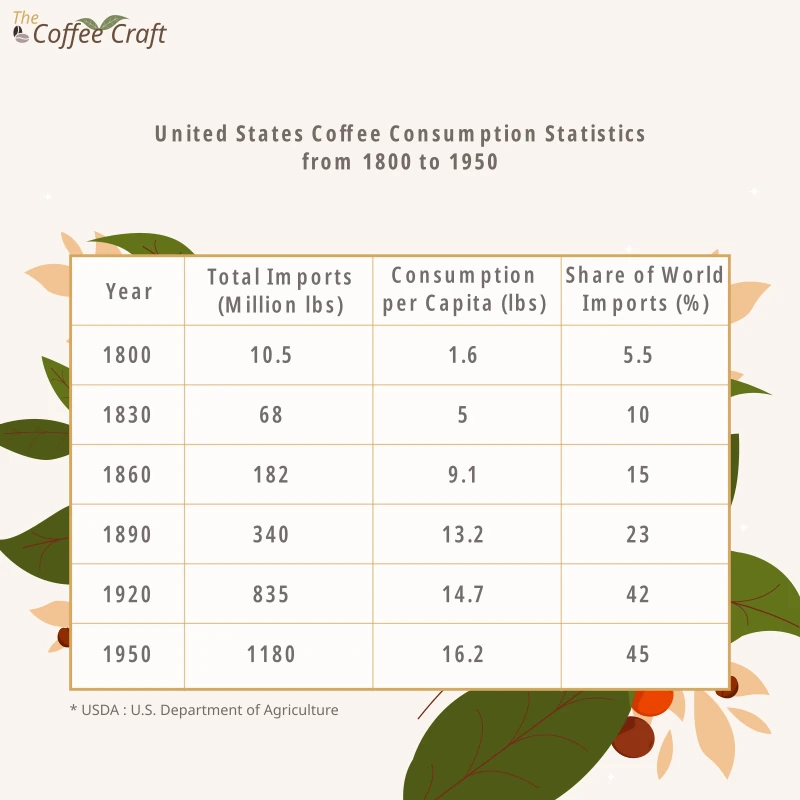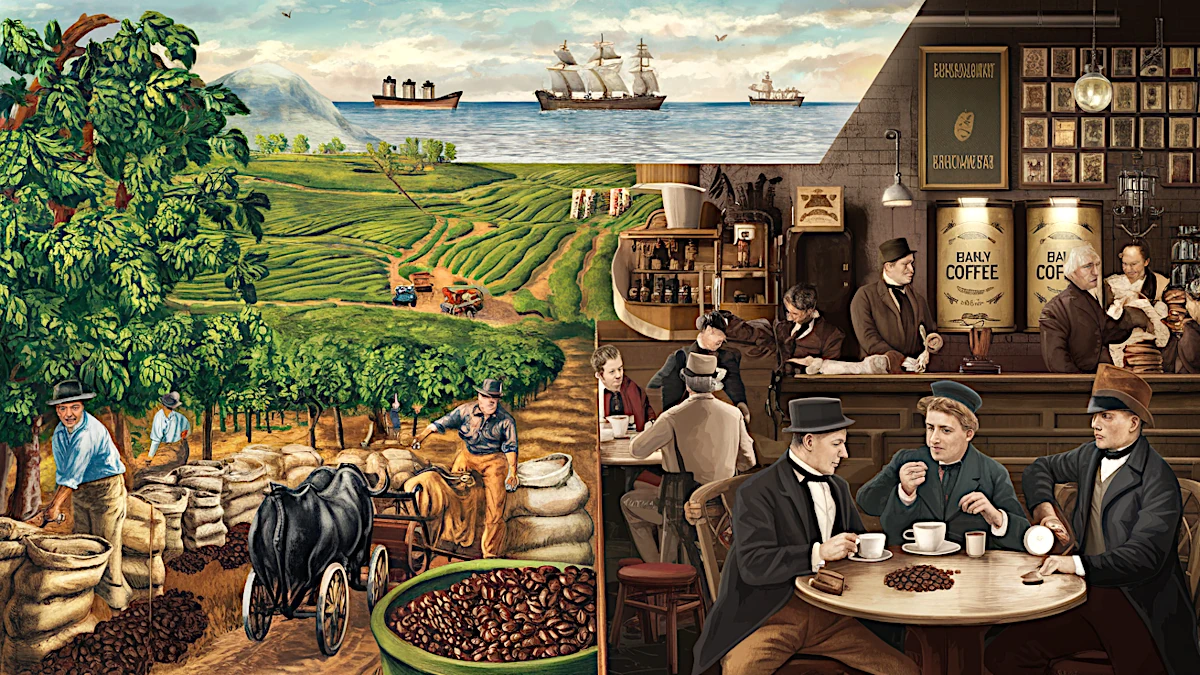The industry of coffee is a vast and dynamic sector, with roots stretching from its early origins to its modern-day influence. Among the countries that played a pivotal role in shaping the global coffee market, Brazil stands out as one of the most influential. This article explores how Brazil’s rise as a dominant coffee producer helped shape coffee consumption in the United States, focusing on the historical evolution of this relationship.
Coffee first made its way to the United States in the 1600s, but it wasn’t until the 19th century that it truly became a staple in American life. Brazil’s growing coffee industry, in particular, was a key driver behind this transformation.
Table of Contents
The Birth of the Brazilian Coffee Industry
Brazil’s Rise to Dominance in the Coffee Market
By the early 1800s, Brazil had begun to flourish as a coffee-producing nation. Brazil’s ideal climate and vast fertile land made it an ideal location for growing coffee. Over time, Brazil emerged as the world’s largest coffee exporter, with the coffee of Brazil dominating the global market.
Brazil’s success in the coffee industry was rooted in its ability to cultivate coffee at scale, thanks to the country’s natural resources. This growth would set the stage for the country’s immense impact on global coffee culture, especially in the United States.
Key Factors in Brazil’s Coffee Success
Several factors contributed to Brazil’s success in the coffee industry. Early on, enslaved laborers were a significant part of the workforce. After the abolition of slavery in 1888, Brazil turned to European immigrants to meet the labor demands of its coffee plantations. This shift allowed Brazil to expand its production capacity while maintaining affordable labor costs, which played a crucial role in its ability to dominate the global market.
Brazil’s Global Impact in the 1800s
By the mid-1800s, Brazil was producing more coffee than all other countries combined. Its position as the world’s leading coffee producer transformed the landscape of coffee consumption, influencing how coffee reached various markets, including the United States.
Coffee in the United States: Early Beginnings
Coffee’s Introduction to America in the 1600s
Coffee first arrived in America in the 1600s, primarily through early imports from the Caribbean. However, it was not widely consumed until much later. Tea was the beverage of choice for early American colonists. The Boston Tea Party of 1773, a protest against British tea taxes, marked a turning point in America’s beverage culture. Americans turned to coffee as a patriotic alternative to tea, setting the stage for its growth in popularity.
The Boston Tea Party and Coffee’s Rise in Popularity
The rebellion against British tea taxes helped establish coffee as a staple drink in American society. By the early 1800s, coffee in the 1800s was growing in popularity, with Americans consuming it at an increasing rate, particularly as it became more readily available from Caribbean suppliers.
The Role of the Civil War in Coffee Consumption
Coffee’s Importance During the Civil War
During the Civil War, coffee became a vital part of daily life for Union soldiers. As part of their rations, soldiers drank coffee to boost morale and keep alert during long battles. The importance of coffee during the war elevated its status as an essential American commodity.
Post-Civil War Surge in Coffee Consumption
After the war, the popularity of coffee surged in the United States. By the mid-1800s, coffee consumption had increased significantly, with the average American drinking over five pounds of coffee annually. This demand paralleled the expansion of Brazil’s coffee plantations, ensuring a steady flow of coffee to meet the growing needs of the American public.
The Brazilian Coffee Industry and U.S. Market Expansion
Brazil’s Role as a Coffee Supplier to the U.S.
By the late 1800s, Brazil had firmly established itself as a key supplier to the U.S. coffee market. The symbiotic relationship between Brazil’s coffee exports and the rising demand in the U.S. meant that coffee became more affordable and accessible to Americans. Brazil’s consistent production and supply ensured that coffee was integrated into American daily life.
Challenges and Competition in the Global Coffee Market
While Brazil maintained its dominance, competition from other countries, such as Costa Rica and Colombia, began to emerge. However, Brazil’s large-scale production capabilities allowed it to remain a key player in the coffee industry, continuing to supply the U.S. with vast amounts of coffee throughout the 20th century.
The Evolution of Coffee Consumption in America
Early Home Roasting to Industrialization (1800s–1900s)
In the 1800s, many Americans roasted their own coffee beans at home. However, as America’s coffee culture grew, industrialization led to the rise of pre-packaged coffee products. Brands such as Folgers and Maxwell House became household names, marking the shift from homemade coffee to commercially packaged varieties. The relationship between coffee and Brazil played a central role in the availability of affordable coffee to American households.

The Rise of Coffee Culture in the U.S.
As coffee became more ingrained in American culture, coffeehouses and diners sprang up across the nation. The coffee culture of the U.S. took root in the 20th century, driven by growing consumer demand. Coffee became not just a drink, but a social experience, further solidifying its place in American life.
The Impact of World War II and Post-War Coffee Consumption
During World War II, coffee rationing became a significant part of American life, reinforcing coffee’s importance as a morale booster. After the war, coffee consumption surged, with instant coffee becoming widely popular due to its convenience. The post-war boom in coffee consumption was further fueled by advertising, which helped cement coffee’s place as an essential part of American life.
Conclusion
The industry of coffee in both Brazil and the United States has had a profound impact on the way coffee is consumed today. Brazil’s rise to dominance as a coffee producer helped shape the coffee culture in the U.S., leading to a partnership that has lasted for centuries. Today, both nations continue to influence the global coffee market, adapting to new demands, with a growing emphasis on sustainability and ethical sourcing. As coffee evolves, the relationship between Brazil and the U.S. remains a vital part of the global coffee story.
